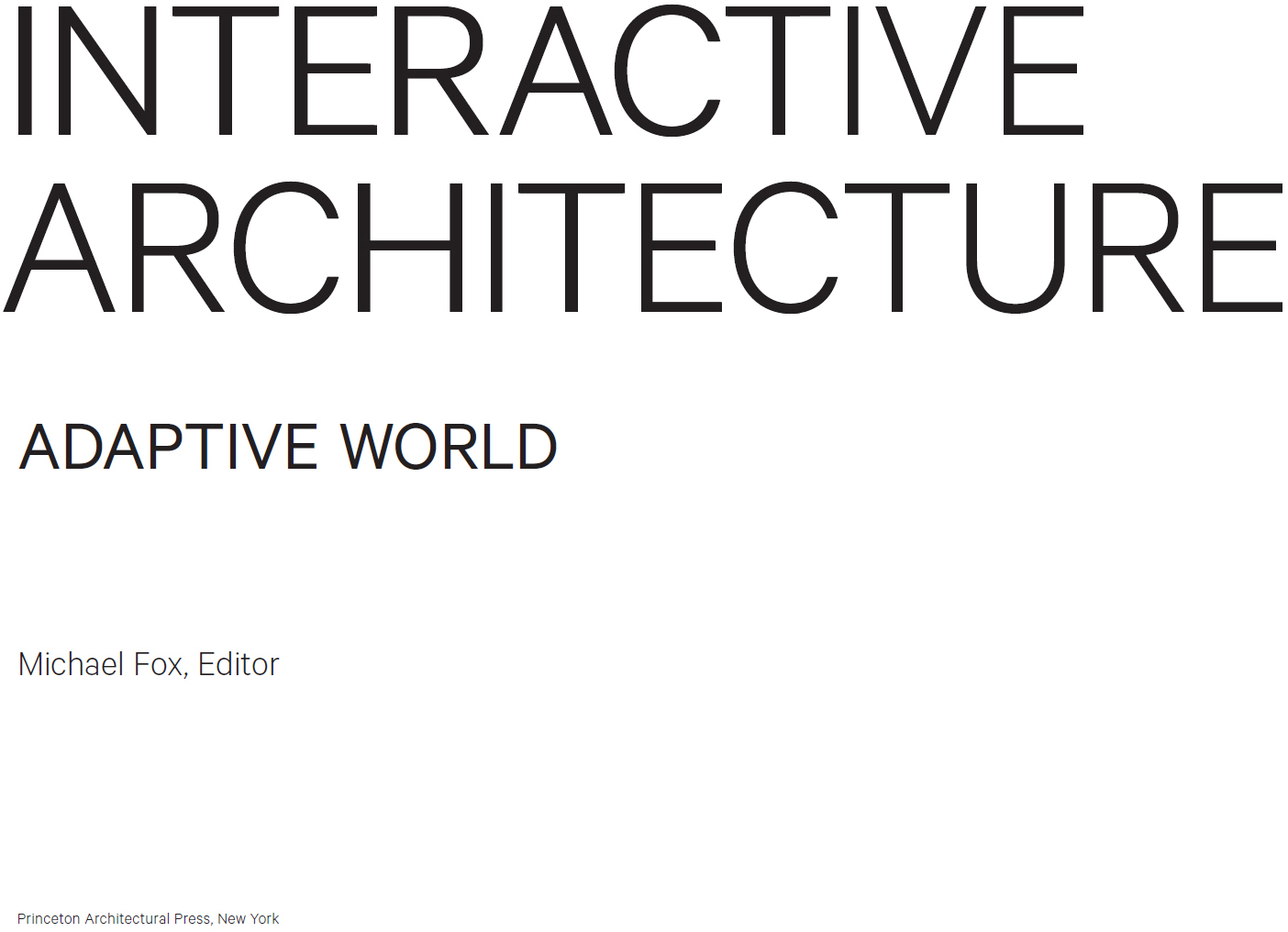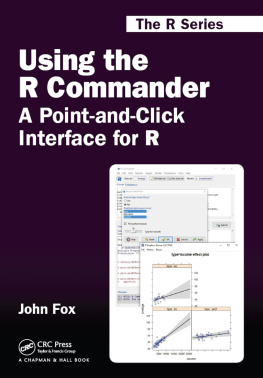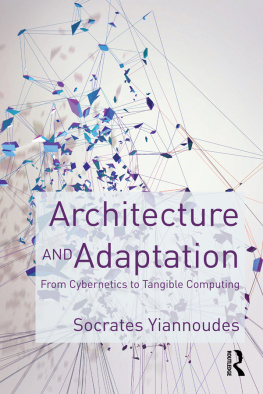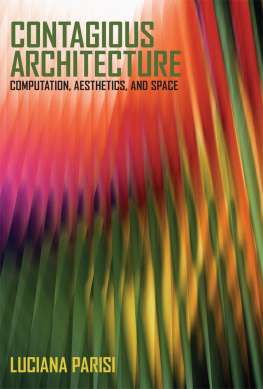

Architecture Briefs is a Princeton Architectural Press series that addresses a variety of single topics of interest to architecture students and professionals. Field-specific and technical information, ranging from hand-drawn to digital methods, is presented in a user-friendly manner alongside basics of architectural thought, design, and construction. The series familiarizes readers with the concepts and skills necessary to successfully translate ideas into built form.
Also in the Architecture Briefs series:
Architectural Lighting: Designing with Light and Space
Herv Descottes, Cecilia E. Ramos
978-1-56898-938-9
Architectural Photography the Digital Way
Gerry Kopelow
978-1-56898-697-5
Building Envelopes: An Integrated Approach
Jenny Lovell
978-1-56898-818-4
Digital Fabrications: Architectural and Material Techniques
Lisa Iwamoto
978-1-56898-790-3
Ethics for Architects: 50 Dilemmas of Professional Practice
Thomas Fisher
978-1-56898-946-4
Hypernatural: Architectures New Relationship with Nature
Blaine Brownell, Marc Swackhamer
978-1-61689-272-2
Material Strategies: Innovative Applications in Architecture
Blaine Brownell
978-1-56898-986-0
Model Making
Megan Werner
978-1-56898-870-2
Old Buildings, New Designs: Architectural Transformations
Charles Bloszies
978-1-61689-035-3
Philosophy for Architects
Branko Mitrovi
978-1-56898-994-5
Sustainable Design: A Critical Guide
David Bergman
978-1-56898-941-9
Urban Composition: Designing Community through Urban Design
Mark Childs
978-1-61689-052-0
Writing about Architecture: Mastering the Language of Buildings and Cities
Alexandra Lange
978-1-61689-053-7
CONTENTS
by Ruairi Glynn
/ Urbana
/ Ned Kahn
/ Charles Sowers
/ Rob Ley, Rob Ley Studio and Joshua G. Stein, Radical Craft
/ Future Cities Lab
/ MAB Architecture
/ Ruairi Glynn and Alma-nac
/ Asif Khan Ltd.
/ Abdulmajid Karanouh, Aedas Architects
/ Sauerbruch Hutton
/ FoxLin and Brahma Architects
/ Studio Roosegaarde and Heijmans Infrastructure
/ Achim Menges with Steffen Reichert and Oliver David Kreig
/ DOSU
/ Manuel Kretzer
/ Philip Beesley
/ Michael Fox and Allyn Polancic
/ Behnaz Farahi Bouzanjani
FOREWORD
Looking through the work in this book, I am immediately struck by how much has changed in the landscape of interactive architecture over the past five years. Where Michael Foxs first book on the field, written with Miles Kemp, presented a vast and promising array of protoarchitectural projects, here we see how quickly the field is maturing, evolving into ambitious permanent and semipermanent installations.
I believe this collection of work reflects an exciting opportunity, in a world of rapid technological change, for architecture to expand its practice and reaffirm itself as the melting pot of the arts and sciences. At the Interactive Architecture Lab, were finding that sensory and responsive technologies expose new and surprising ways to make connections across disparate fields, such as between robotics and the performing arts, wearable computing and perceptual sciences, biology and the visual arts, and artificial intelligence and digital fabrication. And all of this is happening within the wider context of whirlwind progress in robotics that promises driverless cars, autonomous flying vehicles, and seemingly endless other computerized forms that will soon share our built environment.
As these technologies become part of our design tool kit, our typical aesthetic considerations of space, form, and surface expand to encompass concerns of the aesthetics of behavior. Increasingly active, responsive, and kinetic, the material of the built environment is being animated in the truest sense of the word. Architecture imbued with autonomy, an uncanny sense of life, challenges us to look beyond design disciplines to understand the perceptual, emotional, and social effects of these pervasive technologies.
Puppetry, an ancient art with a rich, albeit poorly recorded, history, offers us a performative perspective. The trained puppeteer, a conjurer of what Roman Paska calls the theatre of possession, exploits the spectators sensitivity to the subtitles of motion cues. Through careful manipulation of rods and strings with rhythmic motion, the essential breath of the puppet manifests as life: the speed, duration, acceleration, and deceleration profiles of motion conveying inner emotional states. With the subtlest of changes in rhythm, the puppeteer conveys character in matter, with causal and narrative relationships born of the performance of objects and their environment. Even with little more than breath, a thrilling, complex, and challenging set of aesthetic opportunities can be harnessed, and as the range of gestures grows, the potential to imbue objects and, indeed, architecture with life and character seems endless.
Throughout the history of natural and social sciences, from Aristotles theories of motion as the exclusive characteristic of living things and the early anthropological studies of primitive cultures to the foundations of perceptual and cognitive psychology, we find the association of movement with life itself to be deep and universal. Todays advancements in medical imaging are revealing the neurological roots of this association; its in the very architecture of the social human brain. At its core is the instinct to anthropomorphize the nonhuman, whether animal, inanimate object, or even natural phenomenonto project personality onto other entities as a means of better relating to them.
So as the worlds of architecture and robotics collide, offering new motive and spatial forms of interaction, the cerebral processes of human social relationships are irresistibly stimulated. This renders in strange and uncanny terms a built environment that may viscerally feel worthy of our care and consideration in ways that inanimate matter cannot. We may come to perceive an anthropomorphized architecture as responsible for its own behavior and perhaps even deserving of punishment or reward. As the eminent robotics engineer and philosopher The surreal psychological and social effects are impossible to fully anticipate. What seems certain is that we are at present ill-equipped either conceptually or technically to understand and craft this new aesthetic of behavior.
But then this is really what is so fascinating and what compels us to pursue the potential of interactive architecture. We cant forget that machines are not an entirely new preoccupation. Vitruvius dedicated an entire book of his treaties to machines. Greek mythology told us of Daedalus, the architect of the labyrinth at Knossos, who also crafted magnificent mechanical statues. And by the Renaissance, automatons flourished to act as centerpieces in royal courts and town squares alike. The Florentine Francini brothers hydraulic statues of Saint-Germain-en-Laye famously inspired Descartes to construct his own automaton; a pursuit of understanding that challenged the relationship between the body-machine and the mind-soul, it animated not only cogs and levers, but also the very foundations of Western philosophy.
There is something essentially human about making things that come to life, whether they are mechanical, robotic, cyborg, or architectural. It touches upon a human fascination with looking for life in the inanimate on the one hand and a yearning to play god on the other. The words magic and machine share the common etymological root
Next page



















